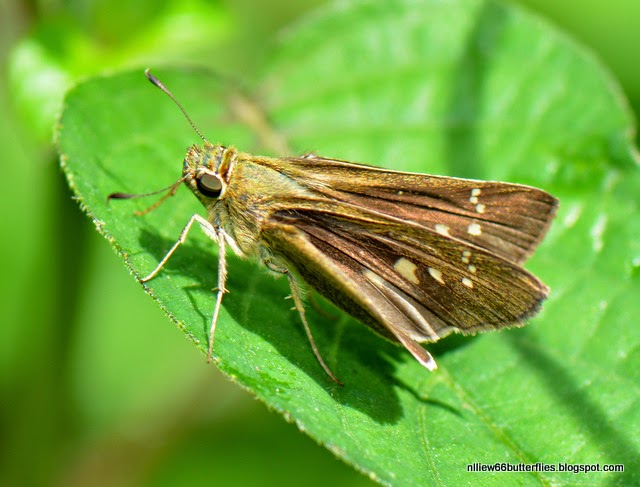Locally common on wastelands, parks and gardens as well as verges of the secondary growth and forests up to mid-elevation.
Some keys to its ID:
- HW underside has spots on space 2, 3 and 6 (pix above)
- body (especially head and thorax) has greenish tinged hairs
Habitat indicator
Some keys to its ID:
- HW underside has spots on space 2, 3 and 6 (pix above)
- body (especially head and thorax) has greenish tinged hairs
Habitat indicator
RSP
|
WV
|
PG
|
VF
|
FTR
|
SC
|
LWDF
|
LWPF
|
LMEF
|
UMN
|
MN
|
x
|
x
|
x
|
x
|
x
|
Frequency observation chart: (S marks the usual occurence, H marks an unusually high occurence, F for first record)
2013
|
2014
| ||||||||||
Nov
|
Dec
|
Jan
|
Feb
|
Mac
|
Apr
|
May
|
Jun
|
Jul
|
Aug
|
Sep
|
Oct
|
2014
|
2015
| ||||||||||||
Nov
|
Dec
|
Jan
|
Feb
|
Mac
|
Apr
|
May
|
June
|
Jul
|
Aug
|
Sep
|
Oct
|
Nov
|
Dec
|
S7
|
S6 S7
|
S5
| |||||||||||
21 Sept 2013 @ 13:29 (S5)
19 Dec 2014 @ 11:54
21 Dec 2014 @ 14:27
Above photos 31 Jan 2015 @ 11:49-54
Above pictures of a female visiting Lantana at 1200M above sea level: 07 June 2015 @ 12:04
Above 2 specimens next to each other on short grasses: 12 June 2015 @ 11:34
Consult a female voucher specimen from S5: http://nlliew66butterflies2.blogspot.com/2015/07/borbo-cinnara-wallace-1866.html























